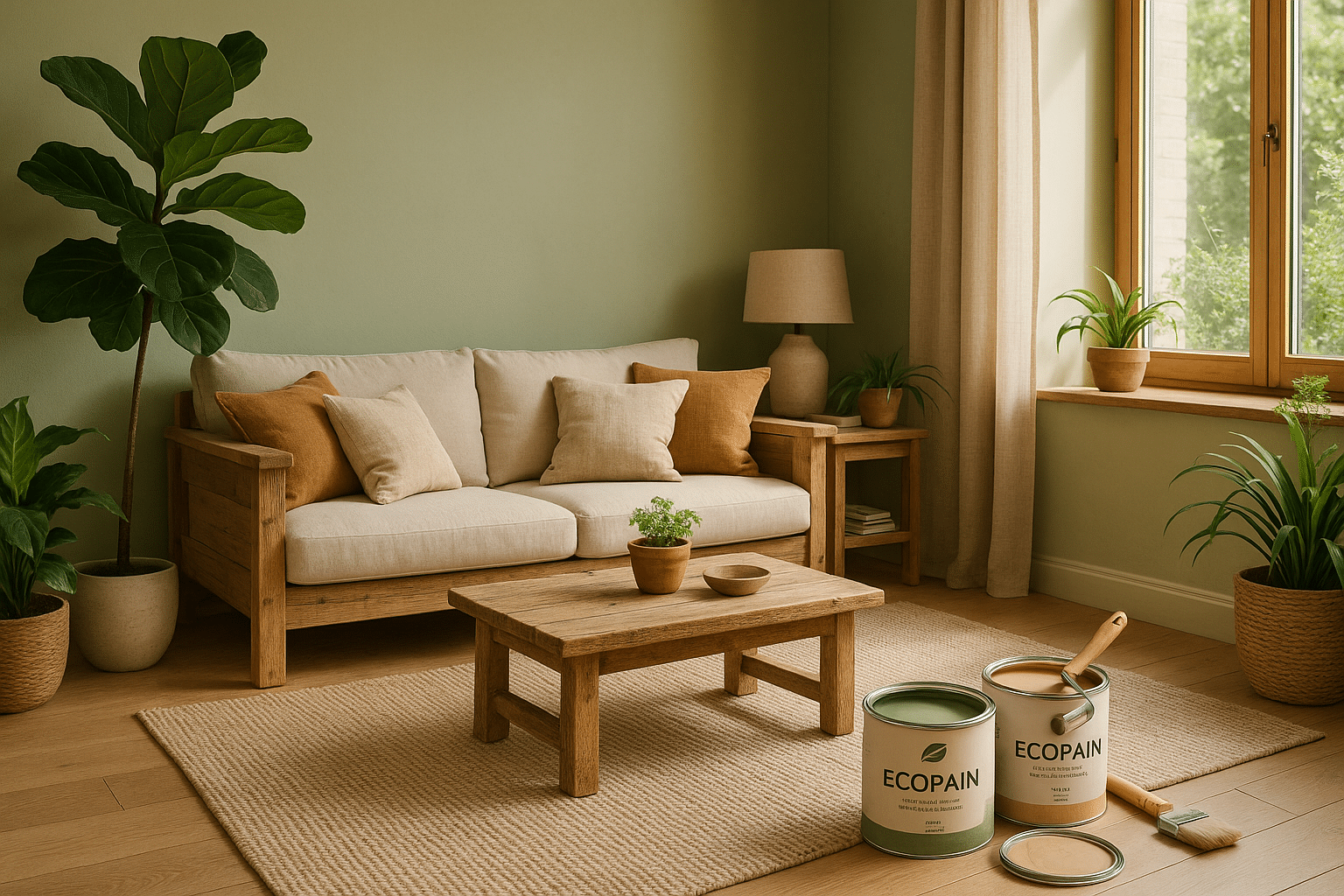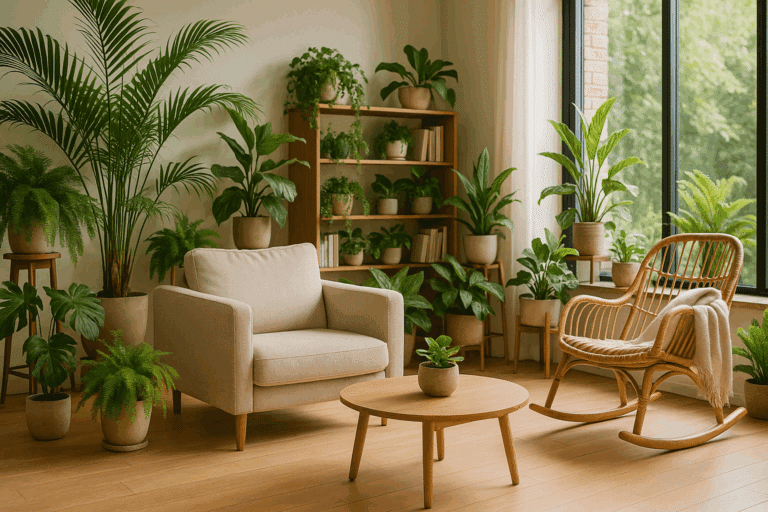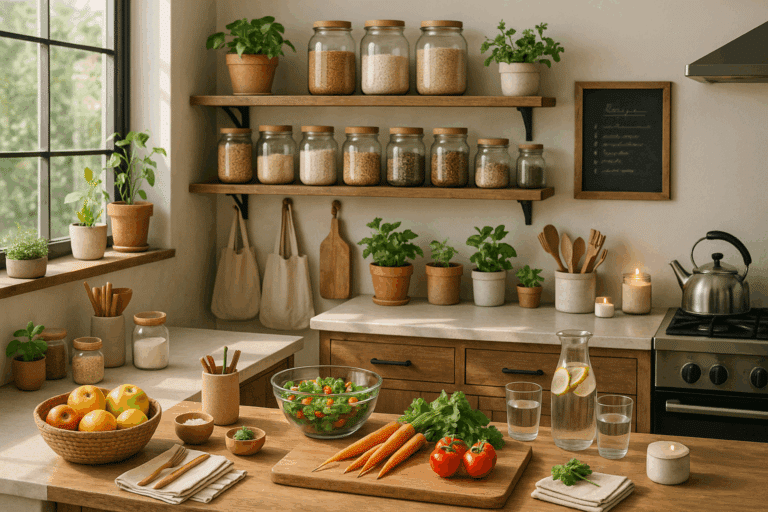One such arena where we can make a significant impact is through the choice of paints we use in our homes. 🌍
Traditional paints contain volatile organic compounds (VOCs) that emit harmful gases, having both immediate and long-term detrimental effects on health and the environment. But the tide is changing, and the market now offers a range of eco-friendly paints that are not only kind to the planet but also promise a stylish finish to your walls.
Through this article, we aim to shed light on the various eco-friendly paint options available, their advantages, and how they contribute to a more sustainable lifestyle. So, if you’re planning to give your space a fresh coat of paint, read on to explore options that are better for you and the environment. 🏠
Understanding the Need for Eco-Friendly Paints
Before delving into the variety of eco-friendly paints, it’s crucial to comprehend why the shift is necessary. Traditional paints contain VOCs, chemical solvents that, while improving the product’s performance, have a harmful impact on indoor air quality and the broader environment.
These compounds evaporate as the paint dries, releasing gases that contribute to indoor air pollution and pose health risks, including headaches, respiratory problems, and more severe chronic conditions. They also contribute to outdoor air pollution and the depletion of the ozone layer. Switching to eco-friendly paints is a step towards mitigating these issues.
What Makes a Paint Eco-Friendly?
Not all green paints are created equal, and it’s important to know what makes a paint truly eco-friendly. They should have low or zero VOC content, be water-based, use natural pigments, and ideally be produced in a manner that minimizes carbon emissions. 🌿
The Different Types of Eco-Friendly Paints
Eco-friendly paints come in various forms, each with its own set of benefits. These include natural paints, recycled paints, and low VOC paints. We’ll delve deeper into each of these types, discussing their properties, performance, and how to choose the best one for your needs.
The Benefits of Eco-Friendly Paints
Aside from being better for the environment, eco-friendly paints offer a host of other benefits, like better air quality, reduced health risks, and even improved aesthetics. They’re also typically easier to clean up after and dispose of, contributing to a more hassle-free painting experience. 🖌️
This comprehensive guide aims to help you navigate the world of eco-friendly paints, armed with the information you need to make an informed, environmentally responsible choice. Whether you’re a DIY enthusiast or a professional decorator, our goal is to provide you with practical, actionable insights for greening your home with eco-friendly paint options.
So, let’s embark on this green journey together, making a conscious effort to choose sustainability over convenience, without compromising on style or quality. 🌱
The Green Revolution in Home Design: Exploring Eco-Friendly Paints
As we continue to stride towards a more sustainable future, it’s imperative to take a holistic approach, integrating eco-friendly options into all facets of our lives. Home design is no exception. The paint we choose to decorate our homes can significantly impact the environment, contributing to pollution and waste. However, a new wave of eco-friendly paint options provides a more sustainable choice for those looking to lessen their environmental footprint without compromising on style.
Conventional paints often contain Volatile Organic Compounds (VOCs) that can release harmful toxins into the air both during and after application. Not only are these harmful for the environment, but they can also pose potential health risks. Eco-friendly paints, on the other hand, contain lower levels of VOCs or none at all, making them a healthier choice for both the planet and its inhabitants.
To help you navigate through the world of eco-friendly paints, we will delve deep into the various options available, exploring their benefits, limitations, and how they compare to conventional paints. This comprehensive guide will provide you with the knowledge needed to make informed decisions, allowing you to create a sustainable and stylish space that aligns with your values. So, let’s begin our journey into the green revolution in home design.
Understanding Eco-Friendly Paints: The Basics
When we talk about eco-friendly paints, we refer to those that are low in VOCs, use natural ingredients, and are biodegradable. They often contain natural pigments and are free from toxic substances such as lead, mercury, and formaldehyde. But, not all eco-friendly paints are created equal. They can be categorized into several types, each with its distinct features and benefits.
Let’s take a closer look at the different types of eco-friendly paints:
| Type | Description |
|---|---|
| Natural Paint | Composed of natural ingredients such as water, plant oils and resins, plant dyes, and essential oils. They are biodegradable and completely VOC-free. |
| Zero VOC Paint | These paints contain less than 5 grams of VOCs per liter, making them a healthier alternative to traditional paints. |
| Low VOC Paint | As the name suggests, these paints have lower levels of VOCs than conventional paints. They contain no or minimal amounts of heavy metals and formaldehyde. |
| Recycled Paint | Created from unused, leftover paint that has been collected and remanufactured. It offers a cost-effective and environmentally-friendly alternative to fresh paint. |
For a visual breakdown of these types of eco-friendly paints, you can watch the video “Eco-Friendly Paints Explained” by Green Home Guide on YouTube.
Benefits and Limitations of Eco-Friendly Paints
As with any product, eco-friendly paints come with their advantages and drawbacks. Here are some aspects you should consider when choosing eco-friendly paint for your home:
Benefits
- Healthier Environment: Since eco-friendly paints contain fewer chemicals, they result in better air quality both during and after painting, creating a healthier living environment.
- Sustainability: These paints have a lower environmental impact, contributing less to pollution and waste. Plus, natural paints are biodegradable, adding to their eco-friendly credentials.
- Variety: Despite being eco-friendly, these paints come in a wide array of colors and finishes, allowing for plenty of creative freedom.
Limitations
- Cost: Eco-friendly paints can be more expensive than conventional paints, although this is often balanced by their long-term benefits.
- Durability: Some types of eco-friendly paints may not be as durable as their conventional counterparts. However, advances in technology are continuously improving their performance.
- Availability: Depending on your location, eco-friendly paints might not be as readily available as traditional paints. Nonetheless, many companies are expanding their offerings, and online shopping makes it easier to access these products.
Given these factors, it’s essential to weigh the benefits against the limitations and decide which factors are most important to you. Remember, making sustainable choices often involves some compromises, but the environmental payoff is well worth it.
Making the Switch: Transitioning to Eco-Friendly Paints
Transitioning to eco-friendly paints is not just a one-off decision. It involves understanding your options, evaluating your needs, and making conscious choices. To assist you in this process, here are some tips:
- Research: Understand the different types of eco-friendly paints available and their respective features. Watching informative videos, such as “Choosing the Right Eco-friendly Paint” by Eco Home, can be a good starting point.
- Test: Before committing to a certain type of paint, it’s a good idea to test it out on a small area first to check for coverage, durability, and the overall look.
- Consider your needs: Different spaces may require different types of paint. For instance, a bathroom may need a paint that’s resistant to moisture and mold.
- Look for certifications: Certifications can provide assurance about the eco-friendliness and quality of the paint. Some popular ones include Green Seal, ECOLOGO, and SCS Global Services.
By following these tips, you can ensure a smoother transition to eco-friendly paints, allowing you to contribute to a greener planet while still achieving a stylish and comfortable living space.

Conclusion
In conclusion, the depth and breadth of the topics we have addressed in this article underscore the importance of technological advancement and the role it plays in our daily lives. As we have seen, the intricate concepts of IT and software engineering, if properly understood and applied, can help us solve complex problems, automate tasks and processes, and enhance productivity and efficiency.
Let’s take a moment to recap the main points. We have touched upon the significant aspects of software engineering, the role it plays in IT, and how it is used to solve intricate and complex problems. The myriad of programming languages available today, their distinctive features and how they can be used effectively in different situations were also discussed in detail. The concept of database management and its importance in organizing and managing large amounts of data was also examined. In addition, the role of networking in IT, and how it enables communication between computers and other digital devices was also elaborated.
We’ve also delved into the relevance and application of machine learning and artificial intelligence, and how they are revolutionizing various industries by automating routine tasks and making predictions based on data. The importance of data security in today’s world, where data breaches are becoming increasingly common, was also stressed.
What we have unraveled in this article only scratches the surface of the vast field of IT and software engineering. The beauty of these fields lies in their ever-evolving nature. New technologies, methodologies, and best practices emerge almost daily, challenging us to learn, adapt, and innovate.
Therefore, it is our responsibility as IT professionals and enthusiasts to keep ourselves updated with the latest trends and technologies. I urge you to utilize the knowledge acquired from this article and apply it to your respective fields of work or study. Don’t hesitate to experiment, innovate, and share your experiences and insights with the community.
💻📚🔧
Remember, knowledge increases by sharing, not by saving. So, feel free to share this article with your peers and colleagues. If you have any comments, suggestions, or queries, don’t hesitate to drop a comment below. I would be more than happy to engage in a discussion with you.
To delve deeper into these subjects, you can refer to the following resources:
– [The Pragmatic Programmer: Your Journey to Mastery](https://pragprog.com/titles/tpp20/the-pragmatic-programmer-20th-anniversary-edition/): A must-read book for every software developer.
– [Coursera](https://www.coursera.org/courses?query=software%20engineering): Offers numerous courses on software engineering and IT.
– [GitHub](https://github.com/): A great platform to explore and contribute to open-source projects.
– [Stack Overflow](https://stackoverflow.com/): A platform for programmers to share knowledge and learn from others.
Let’s keep the learning and discussion going. Here’s to continuous learning and growth in the fascinating world of IT and software engineering. 🚀🌐🎯
Note: Always check the availability and reliability of sources before diving into them. The resources mentioned here were active at the time of writing this article.



